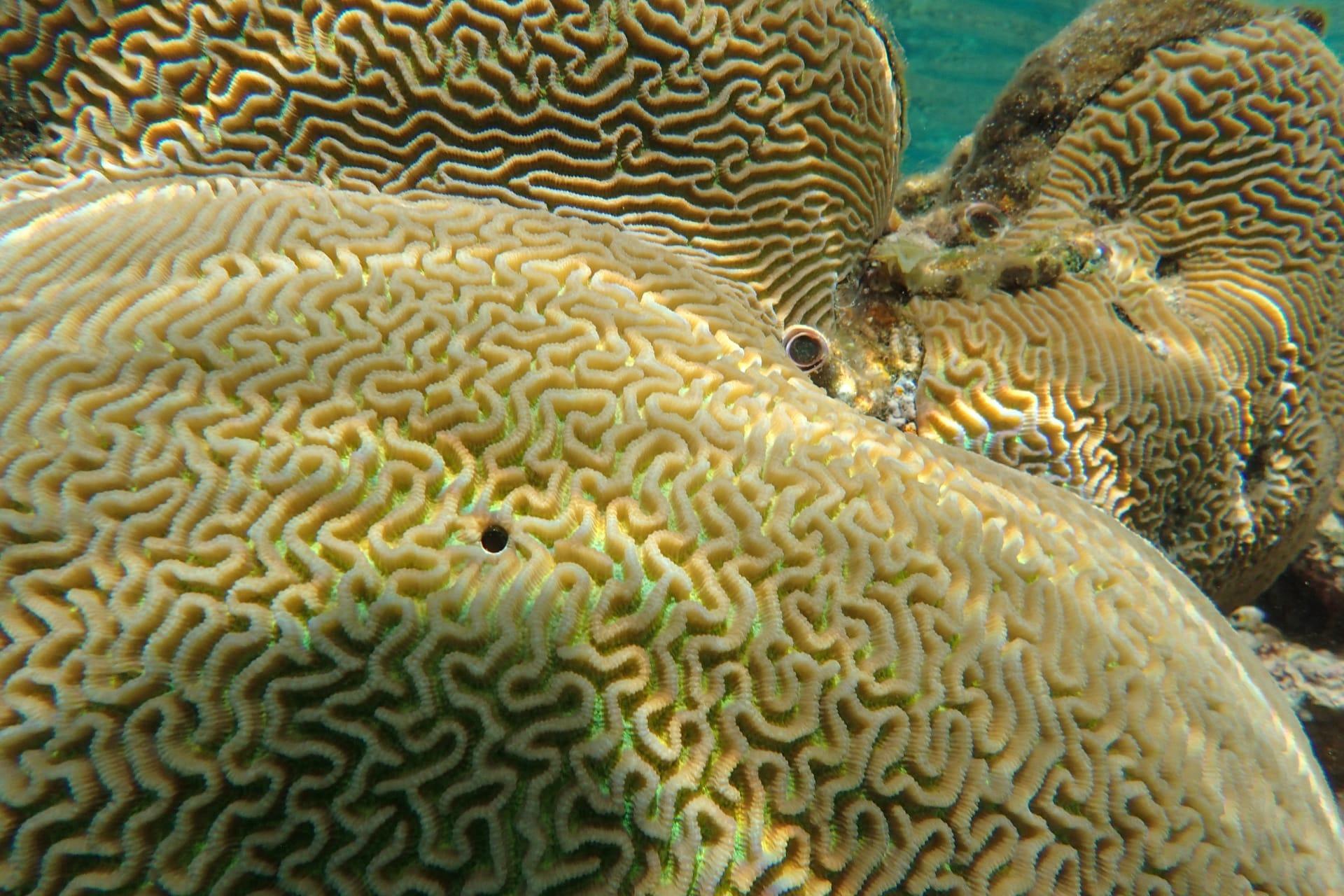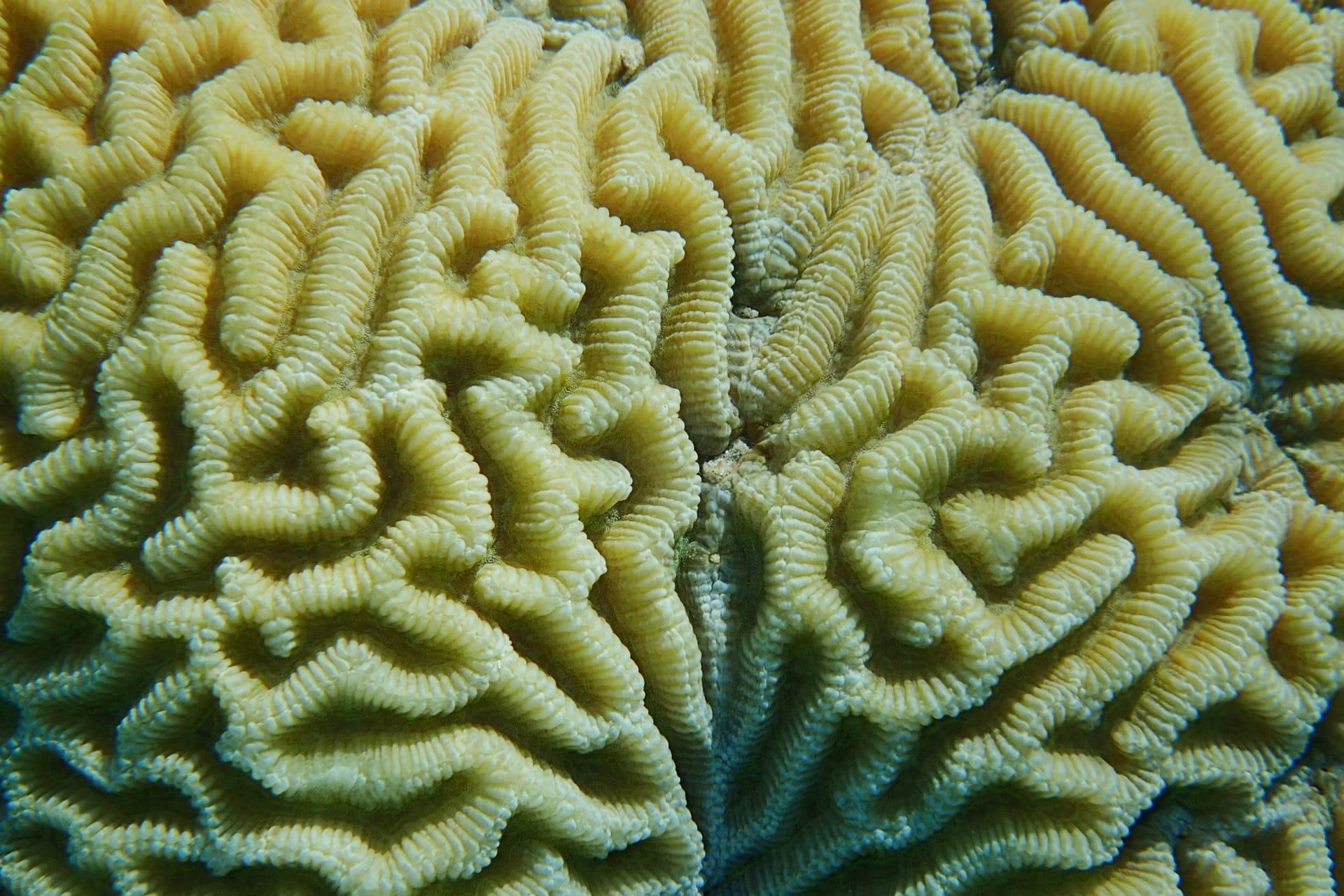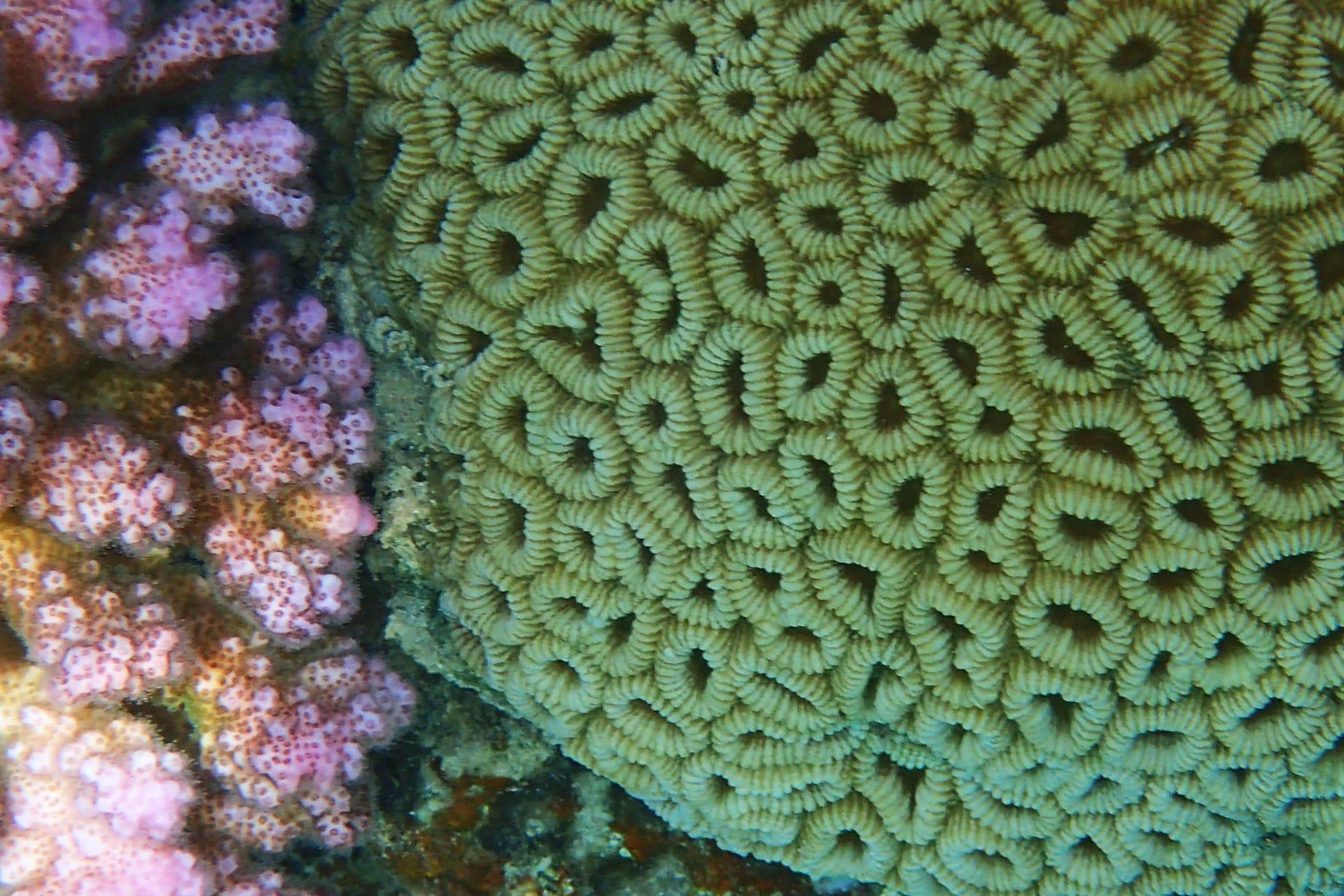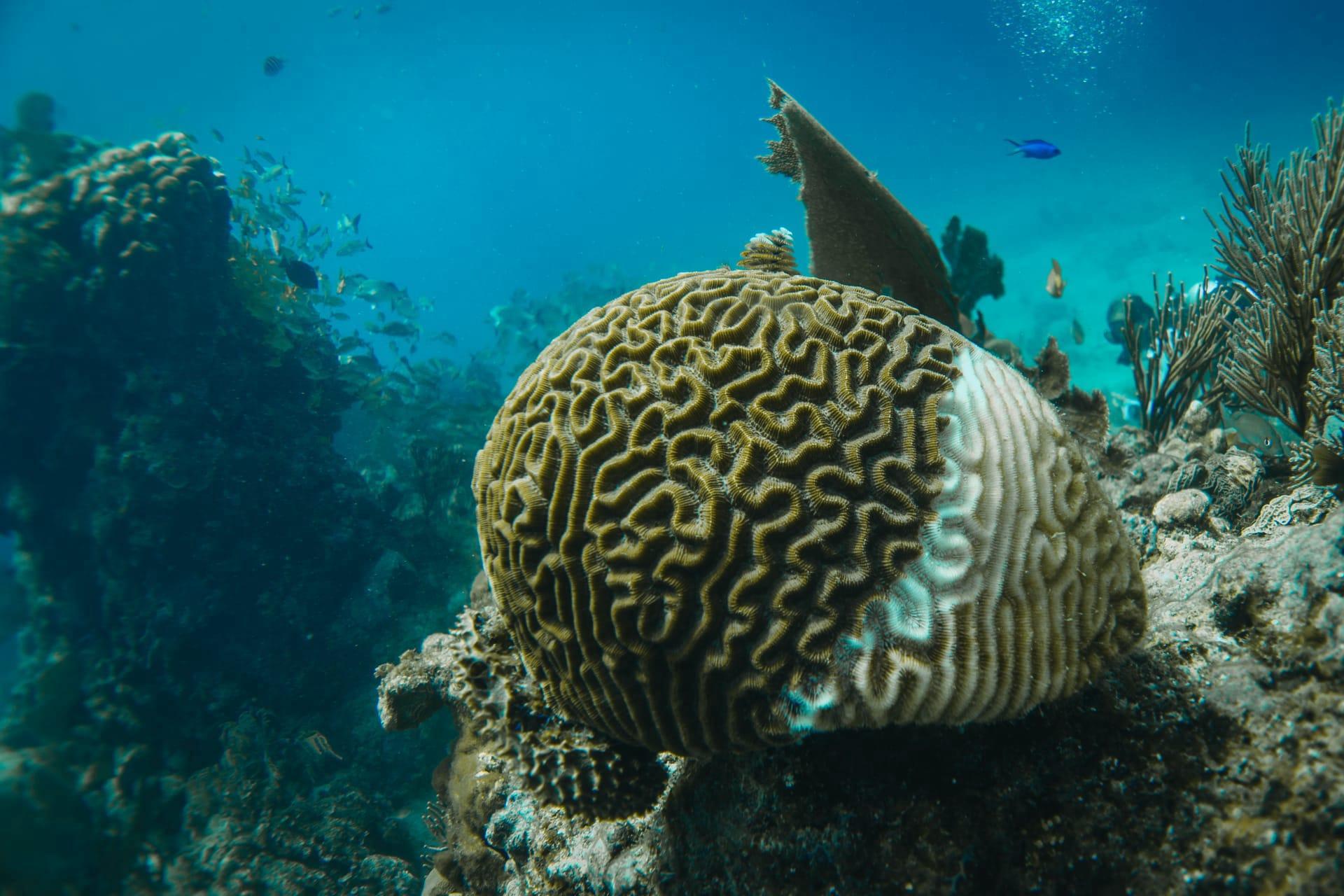1
Brain coral, with its intricate maze-like patterns, is not just a feast for the eyes but a marvel of marine biology. These corals can live for an astonishingly long time, with some individuals reaching over 900 years of age. This longevity places them among the oldest living organisms on the planet. The secret to their extended lifespan lies in their slow growth rate, typically just a few millimeters per year, which contributes to their resilience and the complex structures they form over centuries.
Each brain coral is actually a colony of thousands of tiny organisms called polyps. These polyps are interconnected, creating the coral's characteristic grooved surface that resembles a human brain. The grooves are not random; they are designed to catch sediment and nutrients, maximizing the coral's exposure to food sources. This efficient feeding strategy supports not only the coral itself but also a diverse ecosystem of marine life that depends on the coral for shelter and sustenance.

2
Brain corals thrive in the shallow, warm waters of the world's oceans, particularly in the Caribbean Sea and the Atlantic Ocean. They prefer depths of less than 50 meters, where sunlight can easily penetrate, enabling the symbiotic algae living in their tissues to photosynthesize. This symbiosis is vital, as the algae provide the corals with essential nutrients through photosynthesis, which in turn supports the coral's growth and contributes to the vibrant colors of the reef.
The resilience of brain corals is evident in their ability to withstand changes in their environment, but they are not invincible. They can recover from physical damage caused by storms or human activities, a process that involves the re-growth of polyps over the damaged areas. However, this regeneration can take years, highlighting the need for careful conservation of coral habitats to ensure these natural wonders can continue to thrive for generations to come.

3
Brain corals play a crucial role in the construction of coral reefs, acting as one of the primary builders. Their calcium carbonate skeletons are fundamental in providing the reef with its structure and strength. Over time, the accumulation of these skeletons forms the backbone of coral reefs, creating habitats for thousands of marine species. This not only contributes to the biodiversity of the oceans but also to the protection of coastlines from erosion and storm damage.
Interestingly, the growth pattern of brain corals is influenced by the availability of light and water flow. They tend to grow in a hemispherical shape in areas with lower light levels to maximize the surface area exposed to light, while in areas with strong water currents, they may adopt a more flattened shape to reduce resistance. This adaptability allows brain corals to optimize their energy production and feeding efficiency, further illustrating their remarkable ability to thrive in diverse and changing conditions.

4
Brain corals are not just passive inhabitants of the reef; they actively contribute to the nutrient cycle within their ecosystem. They capture plankton and other small particles from the water, converting them into biomass that feeds not only the coral itself but also a multitude of other reef organisms. This process is a key component of the reef's food web, illustrating the interconnectedness of marine life and the pivotal role of brain corals within this system.
The unique appearance of brain corals is not merely aesthetic; it plays a significant role in their survival. The convoluted surface of the coral increases the area for gas exchange, which is crucial for the respiration of the polyps and the expulsion of waste. This design enhances the efficiency of these processes, ensuring the health and growth of the coral colony despite the often nutrient-poor waters in which they reside.

5
The sexual reproduction of brain corals is a spectacular event, often synchronized with other corals across vast areas of the reef. This phenomenon, known as mass spawning, usually occurs just once a year, triggered by the lunar cycle and temperature changes. During this event, corals release eggs and sperm into the water en masse, increasing the chances of fertilization and contributing to the genetic diversity of the reef. This reproductive strategy is vital for the resilience and adaptation of coral populations to changing environmental conditions.
Climate change poses a significant threat to brain corals, primarily through the process of coral bleaching. This occurs when stressful environmental conditions, such as elevated water temperatures, cause corals to expel the symbiotic algae living in their tissues, leading to a loss of color and vital nutrients. While brain corals can sometimes recover from mild bleaching events, prolonged or severe bleaching can lead to their death, highlighting the urgent need for global efforts to combat climate change and protect these vital marine ecosystems.